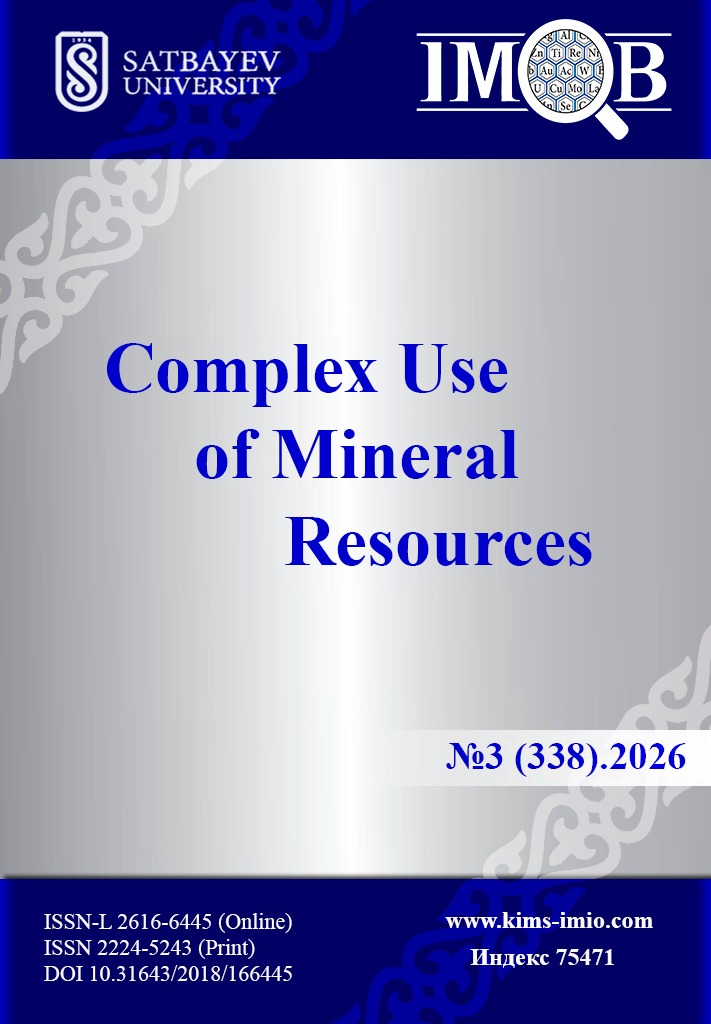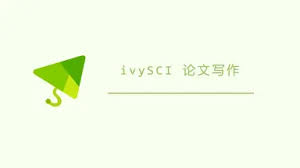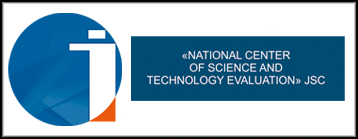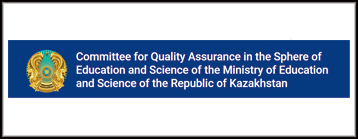Study of Copper Leaching Technology from Copper Ores by Biochemical Method
DOI:
https://doi.org/10.31643/2026/6445.33Keywords:
copper-containing raw materials, biochemical method, leaching, AcidobacillusFerrooxidans, trichloroisocyanuric acid, extraction.Abstract
The article presents the research results on the processing of dump ores of copper production from one of the deposits of Kazakhstan. The copper content in various rock formation samples and from different sampling points varies from 0.2 to 0.9%. On average, the calculated copper content on the southern side of the dump was 0.3%, and on the northern side, 0.28%. Phase analysis of the dump samples revealed that the bulk of the rock is represented by quartz, albite, muscovite, clinochlorite, and noticeable amounts of malachite and atacamite were noted from copper dumps in many areas. Detailed mineralogical analysis, in addition to oxidized forms of minerals, also recorded fragments of sulfide mineral formations such as pyrite, chalcopyrite, chalcosine, etc. For this type of deposit, the most effective method of processing will be the use of biohydrometallurgical heap leaching technology. According to percolation leaching, the use of trichloroisocyanuric acid (TСCА) as a chemical oxidant was considered, and an adapted culture of A.Ferrooxidans was also used as a biooxidant. According to percolation leaching, the use of trichloroisocyanuric acid (TСCА) as a chemical oxidant was considered, and an adapted culture of A.Ferrooxidans was also used as a biooxidant. Standard sulfuric acid leaching served as a control option. As a result of the application of the chemical oxidation method using TСCА, an increase in copper extraction into solution compared with other options was observed only during the first 7 cycles. The highest efficiency was observed in the variant of preliminary bacterial oxidation, 76.08% copper was extracted into the productive solution over 28 irrigation cycles. The resulting productive solutions of all variants were subjected to a full technological cycle of hydrometallurgical copper production. As a result of the extraction and re-extraction processes, electrolyte solutions were developed that fully correspond to the qualitative parameters necessary for electrolysis. At the electrolysis stage, 30.8 g of copper was deposited on the cathode from the accumulated electrolyte solutions, which gives a current recovery equal to 94.6%.
Downloads
References
Godirilwe LL, Magwaneng RS, Sagami R, Haga K, Batnasan A, Aoki S, Kawasaki T, Matsuoka H, Mitsuhashi K, Kawata M, Shibayama A. Extraction of copper from complex carbonaceous sulfide ore by direct high-pressure leaching. Minerals Engineering. 2021; 173:107181. https://doi.org/10.1016/j.mineng.2021.107181
Magwaneng RS, Haga K, Batnasan A, Shibayama A, Kosugi M, Kawarabuki R, Mitsuhashi K, Kawata M. Investigation of copper and iron recovery from copper ore by high pressure leaching. International Journal of the Society of Material Engineering for Resources.2018; 23(1):80-83. https://doi.org/10.5188/ijsmer.23.80
David T Hopkins, Stephanie MacQuarrie, Kelly A Hawboldt. Removal of copper from sulfate solutions with the use of biochar derived from crab processing by-product Journal of Environmental Management. 2022; 303:114270. https://doi.org/10.1016/j.jenvman.2021.114270
Sariev O, Dossekenov M, Kelamanov B, & Abdirashit А. High-carbon ferromanganese smelting on high-base slags. Kompleksnoe Ispolzovanie Mineralnogo Syra = Complex Use of Mineral Resources.2020; 315(4):63-73. https://doi.org/10.31643/2020/6445.38
Santaolalla A, Gutierrez J, Gallastegui G, Barona A, Rojo N. Immobilization of Acidithiobacillus ferrooxidans in bacterial cellulose for a more sustainable bioleaching process. Journal of Environmental Chemical Engineering. 2021; 9(4). https://doi.org/10.1016/j.jece.2021.105283
Lin M, Yang B, Lin H, Liu S, Wang J. Catalytic Effects of Red Mud and Acidithiobacillus ferrooxidans on Biodissolution of Pyrite IOP Conference Series: Earth and Environmental Science, 2021; 768(1):012019. https://doi.org/10.1088/1755-1315/768/1/012019
Ignatiev MM, Magad E, Koyzhanova AK, Amanzholova LU, Atanova OV. Study of complexation during processing from the productive solutions of heap leaching copper by liquid extraction. Bulletin of KazNITU.2016; 1:153-161.
Lv X, Zhao H, Zhang Y, Yan Z, Zhao Y, Zheng H, Liu W, Xie J, Qiu G. Active destruction of pyrite passivation by ozone oxidation of a biotic leaching system. Chemosphere. 2021; 277:130335. https://doi.org/10.1016/j.chemosphere.2021.130335
Kenzhaliyev B, Ketegenov T, Mussapyrova L, Nadirov R. Ultrasound-Assisted Selective Leaching of Arsenic from Copper Smelting Flue Dust. Minerals. 2024; 14(6):532. https://doi.org/10.3390/min14060532
Koizhanova AK, Magomedov DR, Tastanov EA, Kenzhaliyev BK, Sedelnikova GV, Berkinbayeva AN. Intensification of copper leaching from heaps with the use of biological oxidation. Metalurgija.2022; 61(3-4):789-792.). https://hrcak.srce.hr/274040
Koizhanova A, Magomedov D, Abdyldayev N, Kamalov E, Yerdenova M, Bakrayeva A. Copper Extraction from Com-plex Waste Dumps by Biochemical Leaching Method. Journal of Ecological Engineering. 2022; 23(10):283-290. https://doi.org/10.12911/22998993/152342
Meadows NE, Pollard DM. Oxidative lead chalkopyritein a chloridesulphate lixivant. Res. and Dev Met. Austral. Inst. Mining and Met. Adelaide Parkville. 1987, 109-114.
LvX, ZhaoH, Zhang Y, Yan Z, Zhao Y, Zheng H, Liu W, Xie J, Qiu G. Active destruction of pyrite passivation by ozone oxidation of a biotic leaching system. Chemosphere.2021; 277:130335. https://doi.org/10.1016/j.chemosphere.2021.130335
Santaolalla A, Gutierrez J, Gallastegui G, Barona A, Rojo N. Immobilization of Acidithiobacillus ferrooxidans in bacterial cellulose for a more sustainable bioleaching process. Journal of Environmental Chemical Engineering. 2021; 9(4):105283. https://doi.org/10.1016/j.jece.2021.105283
Koizhanova A, Kenzhaliyev B, Magomedov D, Kamalov E, Yerdenova M, Bakrayeva A, Abdyldayev N. Study of Factors Affecting the Copper Ore Leaching Process. ChemEngineering. 2023; 7(3):54. https://doi.org/10.3390/chemengineering7030054
Song C-I, Jo C-M, Ri H-G. Immobilization of Acidithiobacillus ferrooxidans-1333 on the waste ore particles for the continuous oxidation of ferrous iron. Iranian Journal of Biotechnology. 2020; 18(3):55-61. https://doi.org/10.30498/ijb.2020.125528.2224
Dyussebekova M, Kenzhaliyev B, Kvyatkovskiy S, Kozhakhmetov S, Semenova A, Sukurov B. Study of the Effect of Fluxing Ability of Flux Ores on Minimizing of Copper Losses with Slags during Copper Concentrate Smelting. Metals. 2022; 12(8):1240. https://doi.org/10.3390/met12081240
Wu S, et al. Effect of Bi(III) on flotation of copper sulfide from leaching residue of copper smelting dust. Minerals Engineering. 2025; 220:109092. https://doi.org/10.1016/j.mineng.2024.109092
Sulphuric Acid Price Trend and Forecast. URL: https://www.chemanalyst.com/Pricing-data/sulphuric-acid-70[20]LME Copper. URL: https://www.lme.com/Metals/Non-ferrous/LME-Copper#Trading+day+summary
Koizhanova A, Kenzhaliyev B, Magomedov D, Erdenova M, Bakrayeva A, & Abdyldaev N. Hydrometallurgical studies on the leaching of copper from man-made mineral formations. Kompleksnoe Ispolzovanie Mineralnogo Syra = Complex Use of Mineral Resources. 2024; 330(3):32-42. https://doi.org/10.31643/2024/6445.26
Downloads
Published
How to Cite
Issue
Section
License
Copyright (c) 2025 B. Kenzhaliyev, А. Koizhanova, M. Yerdenova, D. Magomedov, A. Bakraeva, N. Abdyldayev, B. Kassenova

This work is licensed under a Creative Commons Attribution 4.0 International License.


























